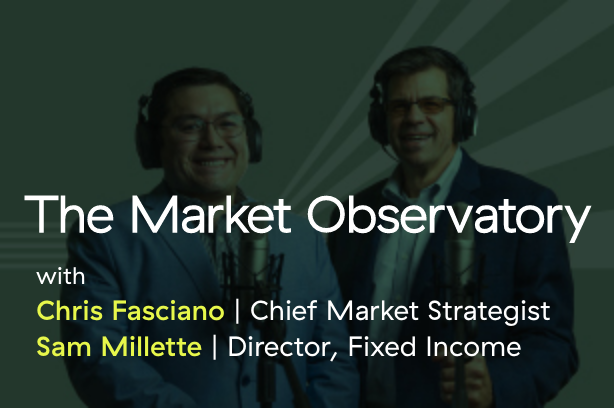Is the recent market stumble something to worry about? I discuss this and more on CNBC’s The Exchange.

Is the recent market stumble something to worry about? I discuss this and more on CNBC’s The Exchange.
April 22, 2020
Today, I'd like to take another look at where we are with containing the COVID-19 pandemic. Since last week, there has been real progress on many fronts, although concerns remain.
April 21, 2020
Now that it looks like the coronavirus is starting to come under control (and I will do another update here tomorrow), it is time to think about what is coming next for the markets. We have had the fastest onset of a bear market in history, followed by the fastest recovery into a bull market in history. This kind of volatility is, well, historic. But since it is unprecedented, we can’t really look back at history for guidance as to what happens next.
April 17, 2020
Today, I'd like to provide an update on the coronavirus crisis, including its effects on the economy and markets. With regard to the virus itself, we’re seeing signs of progress. This week, the daily spread rate dipped below 5 percent, and the number of new cases per day started to stabilize. With this good news on the pandemic front, the focus is shifting to how to reopen the economy. Here, the news is not as good. With more than 22 million jobs lost over the past several weeks and many businesses remaining closed, the damage is mounting.
April 15, 2020
My colleague Sam Millette, senior investment research analyst on Commonwealth’s Investment Management and Research team, has helped me put together this month’s Market Risk Update. Thanks for the assist, Sam!
April 14, 2020
Some good news to report today: the coronavirus curve has been flattened. Now, you might wonder how I can say this when the cases continue to rise. In fact, no one has really come up with a definition of what “flattening the curve” means. So, from my perspective, it’s when the daily case growth rate declines enough that, despite the increased base of cases each day, the number of new cases declines. That scenario has now happened for several days in a row.
April 10, 2020
My colleague Sam Millette, senior investment research analyst on Commonwealth’s Investment Management and Research team, has helped me put together this month’s Economic Risk Factor Update. Thanks for the assist, Sam!
April 9, 2020
Today, I'd like to look at where we are in the coronavirus crisis, including the economic and market implications. As the virus continues to move across the country, we can expect April to be a tough month. At the same time, there has been some positive news regarding the pandemic itself. The spread rate has dropped significantly over the past week, demonstrating the measures we’ve put in place seem to be working. But on the economic side, the news is not so good. We’ve lost more than 16 million jobs in the past three weeks. On top of that, both businesses and consumers have started to pull back. Fortunately, government programs are now being implemented, which may help mitigate the damage in the weeks ahead.
April 8, 2020
Things have quieted a bit (but only a bit) in terms of the coronavirus crisis. As such, I thought it would be a good time to provide an update on this evolving situation. Let’s start with the trends in the spread of the virus to understand what they mean in the present for the markets, as well as in the future for the pandemic itself and the economy.
April 3, 2020
Today, I'd like to provide an update on the wide-ranging effects of the coronavirus pandemic. With case counts continuing to rise, we may be entering into the toughest phase of the crisis. Although there are signs of general improvement, including a slowdown in case growth, the economic damage is mounting. More than 6 million people lost their jobs in the past week, bringing the total number of jobs lost thus far to around 10 million.

Episode 13
November 19, 2025
Episode 12
October 14, 2025
Episode 11
September 10, 2025
Episode 10
August 13, 2025
Episode 9
July 23, 2025
The information on this website is intended for informational/educational purposes only and should not be construed as investment advice, a solicitation, or a recommendation to buy or sell any security or investment product. Please contact your financial professional for more information specific to your situation.
Certain sections of this commentary contain forward-looking statements that are based on our reasonable expectations, estimates, projections, and assumptions. Forward-looking statements are not guarantees of future performance and involve certain risks and uncertainties, which are difficult to predict. Past performance is not indicative of future results. Diversification does not assure a profit or protect against loss in declining markets.
The S&P 500 Index is a broad-based measurement of changes in stock market conditions based on the average performance of 500 widely held common stocks. All indices are unmanaged and investors cannot invest directly in an index.
The MSCI EAFE (Europe, Australia, Far East) Index is a free float‐adjusted market capitalization index that is designed to measure the equity market performance of developed markets, excluding the U.S. and Canada. The MSCI EAFE Index consists of 21 developed market country indices.
One basis point (bp) is equal to 1/100th of 1 percent, or 0.01 percent.
The VIX (CBOE Volatility Index) measures the market’s expectation of 30-day volatility across a wide range of S&P 500 options.
The forward price-to-earnings (P/E) ratio divides the current share price of the index by its estimated future earnings.
Third-party links are provided to you as a courtesy. We make no representation as to the completeness or accuracy of information provided on these websites. Information on such sites, including third-party links contained within, should not be construed as an endorsement or adoption by Commonwealth of any kind. You should consult with a financial advisor regarding your specific situation.
Member FINRA, SIPC
Please review our Terms of Use.
Commonwealth Financial Network®